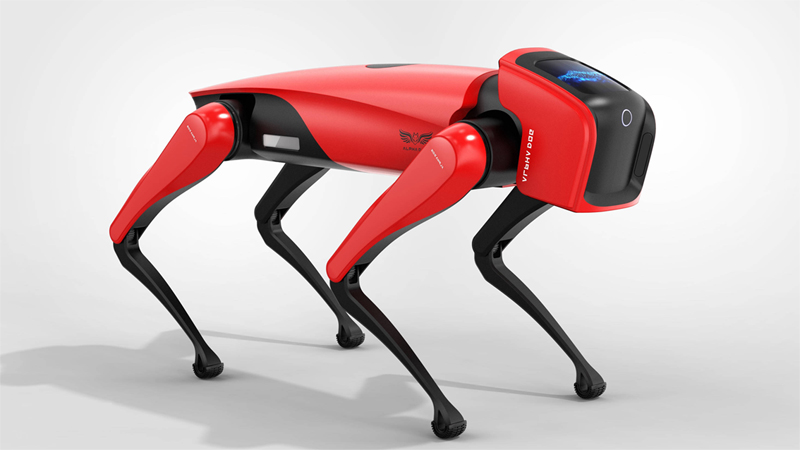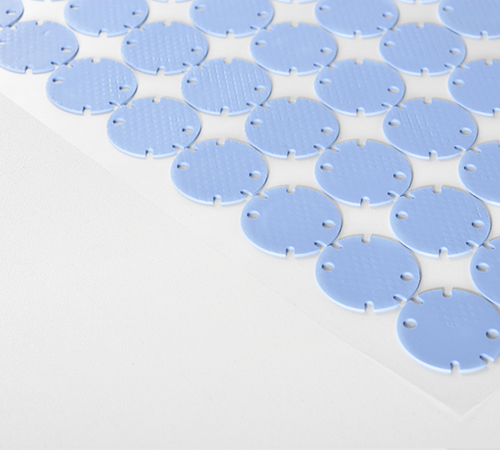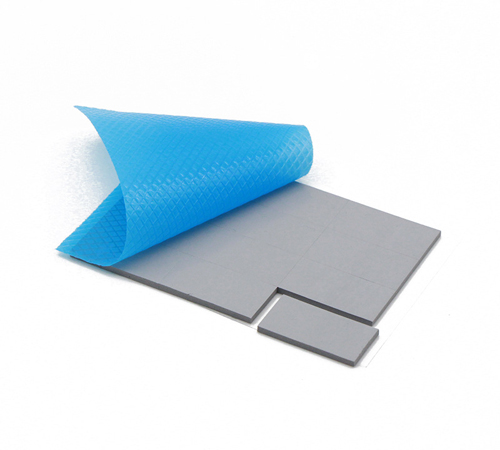Revolutionizing Robotic Canine Cooling: NF150-300 Thermal Pad 2mm Solutions

In today's era of rapid technological advancement, intelligent robot dogs, as the pinnacle of integration in artificial intelligence and robotics technology, are gradually transitioning from science fiction films into our daily lives. They not only autonomously navigate complex environments and execute search-and-rescue missions but also serve as affectionate companions in households, bringing numerous conveniences to human life. However, with their capabilities growing increasingly potent, these highly integrated electronic devices confront a common challenge-efficient heat dissipation. To ensure that robot dogs operate stably and effectively utilize their various functions, identifying a suitable heat dissipation material is crucial. The NF150-300 thermally conductive silicone pad is tailored for this purpose, distinguished by its exceptional performance and unique advantages, making it an ideal choice for tackling the heat dissipation issues in robot dogs.
Challenges in Heat Dissipation for Intelligent Robot Dogs
Robot dogs house intricate interiors packed with high-performance processors, sensors, motors, and other energy-intensive components. During high-intensity tasks, these elements generate substantial heat. If not promptly dissipated, accumulated heat can impair system performance, causing processing speed to decline and stability to weaken, and in severe cases, may lead to component damage and shorten the lifespan of the robot dog. Thus, the efficiency of heat dissipation directly impacts the operational stability and reliability of intelligent robot dogs.
The challenges faced in heat dissipation design primarily involve:
1. Spatial Constraints: To maintain flexibility and maneuverability, robot dogs have extremely limited internal space, imposing stringent demands on the size of the cooling system.
2. Environmental Adaptability: Robot dogs are required to operate in diverse and complex environments, including those with extreme temperatures and humidity fluctuations, posing a significant test for the environmental adaptability of heat dissipation materials.
3. Continuous Operation Capability: Long hours of continuous operation necessitate a cooling system with sustained high performance to maintain the stable working state of the robot dog.

The NF150-300 Thermally Conductive Silicone Pad 2mm Solution
Addressing these challenges, the NF150-300 thermally conductive silicone pad 2mm presents a viable solution for the heat dissipation problems in robot dogs through its unique performance advantages.
Product Characteristics and Advantages
- High Thermal Conductivity: With a thermal conductivity coefficient reaching 3.0W/m-k, the NF150-300 silicone pad swiftly transfers more heat within a given time, accelerating heat exchange between the heat source and the heat sink, thereby enhancing cooling efficiency.
- Precise Thickness Control: A 2.0mm thickness design ensures ample thermal conduction capacity while fitting within tight spaces, suiting the compact design requirements of robot dogs.
- Excellent Density and Breakdown Voltage: A density of 3.0 (±0.5) g/cc facilitates good filling and compressibility, enhancing thermal transmission at contact surfaces. Meanwhile, a breakdown voltage of ≥8kV ensures safe use in high-voltage electrical environments, averting short-circuit risks.
- Broad Operating Temperature Range: Functioning within a range of -40~200℃, the NF150-300 maintains excellent thermal management performance across all extremes robot dogs may encounter, be it icy mountains or scorching deserts, ensuring internal temperature stability.
- Long-Term Stability and Reliability: Fabricated with high-quality silicone materials and subject to rigorous production controls and aging tests, the NF150-300 guarantees physical and chemical stability over extended use, mitigating performance degradation due to material aging and prolonging the overall lifespan of the robot dog.
Application Details and Outcomes
In practical application, the NF150-300 thermal pad 2mm is strategically placed between key heat-generating components of robot dogs, such as processors and motor controllers, and their casings or dedicated cooling modules. Its soft and elastic nature enables perfect conformity to irregular surfaces, forming a low impedance thermal pathway that effectively fills even minute gaps, significantly boosting overall thermal conductivity.
Moreover, thanks to its remarkable environmental adaptability and long-term stability, the NF150-300 sustains stable thermal conductivity under continuous heavy loads, effectively preventing overheating due to heat accumulation, prolonging the robot dog's lifespan, and assuring reliability and stability during complex missions.
Conclusion
As pivotal members of the future smart society, resolving heat dissipation issues in intelligent robot dogs is vital for enhancing their efficiency and longevity. The NF150-300 thermally conductive silicone pad 2mm, with its outstanding thermal conductivity, wide temperature tolerance, and efficient application in confined spaces, offers an ideal solution for the heat dissipation design in robot dogs. As technology advances and application scenarios expand, the use of NF150-300 will become even more prevalent, empowering robot dogs to unleash their unique value across various domains and propel further development in artificial intelligence technology.


 CN >
CN >



